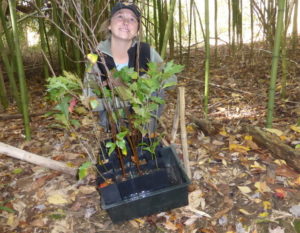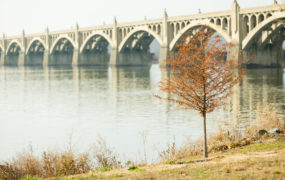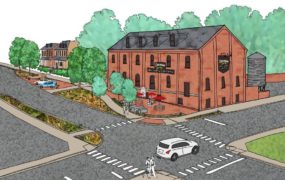Introduction
Combating threats to vibrant urban forests begins and ends with one thing: data. In Pennsylvania, the state has been equipping communities affected by Emerald Ash Borer (EAB) with capacity and tools to gather data on EAB infestation and their ash tree resources. With support from a recently completed US Forest Service grant, the Pennsylvania Urban and Community Forestry Council collaborated with the state Bureau of Forestry and many partners to work on EAB Management Plans for 10 cities and counties in the state over the span of 2 years. An EAB plan template and guidance are now available for other communities across the state to use and adapt.
Inventories Link to Funding
Each plan requires key inputs of inventory data, including tree size, species, health condition, and location to determine if each ash tree can be saved or needs to be removed. Some jurisdictions prefer to collect additional relevant information like soil condition or planting area descriptions like riparian buffers, open fields, or closed canopy areas. The more tree data are collected, the better-positioned city and county staff will be to create future models and make informed decisions about their landscapes. These plans function as tools for local public agencies to get support for dealing with EAB. Solutions for a community could include preventative chemical treatments, tree removals, tree plantings, or a coordinated stewardship approach towards long-term tree monitoring programs. Regardless of each community’s chosen path, EAB contributes to the loss of canopy, therefore communities need resources and tools to monitor, save, and replace their ash trees with non-host native trees.

Every plan gets ranked by an independent assessment to receive state or federal funding, and with capacity-building support from the Council, participating communities have seen an increase in funding support for their EAB initiatives. “Listening to what the municipality’s needs are—parks, open lots, easements, and importantly street trees—proves key to a successful project. For example, EAB can kill an ash tree after the first year of infestation, weakening a tree so severely that removal costs become very high,” notes Kendra McMillin, the project coordinator who worked with communities on developing their EAB Management Plans.
Costs like these can be avoided when communities employ tools and practices for early EAB detection. Funding is available to city and county governments who want to prioritize taking inventory of their canopies. “Our goal was to make sure that each EAB management plan has all of the necessary components to be reviewed by the USDA Forest Service for these communities to get additional funding to implement their plans,” says McMillin. “It all comes down to budgets. Most communities are unprepared for trees dying so rapidly. Municipal spending tends to be reactionary, and eats into other funds, for instance a line item for snow removal. When we can assess the current canopy conditions, that gives us a baseline for preparing a budget to implement tree care and address canopy loss, saving communities money over time.”
The Inventory Process
The PA Urban and Community Forestry Council and parterns supported three i-Tree Training sessions and four EAB workshops across PA to equip community stakeholders with skills and tools to use in their inventorying process. All those involved in the inventory analysis were required to get trained, including professors and students from state universities, municipal staff, and other community volunteers. After the trainings were completed, each stakeholder volunteered for a specific role in the inventory process, which followed these steps:
- Perform the assessment, with the minimum inputs: number of trees, diameter at breast height (DBH), location and health conditions.
- With this data, jurisdictions can know their ash tree resource conditions. This data is the basis for creating the plan of action that may include removals or treatments depending on the circumstance.
- Resource appraisal for staff training and equipment needs for the project.
- Are the right people involved? What type of equipment will they need?
- Assign administrative tasks like accounting, project management, public outreach, and data review to involved stakeholders.
Ideally, the plan will span about 10 years to ensure communities can make it through the first wave of EAB prepared.
Next Steps
A comprehensive best practice publication that details EAB planning recommendations is currently in the works. For now, urban forestry practitioners can visit the PA Department of Conservation and Natural Resources Emerald Ash Borer website to look at completed plans and plan guidance.
Equipped with the ability to gather up-to-date data on their trees, Pennsylvania communities now have greater capacity to garner support for healthy urban canopies.
Related Resources:
Pennsylvania Department of Conservation and Natural Resources- Emerald Ash Borer
News article: Emerald ash borer: How cities and towns can prepare for invasion
Story written by Lillie Leaf Solutions





